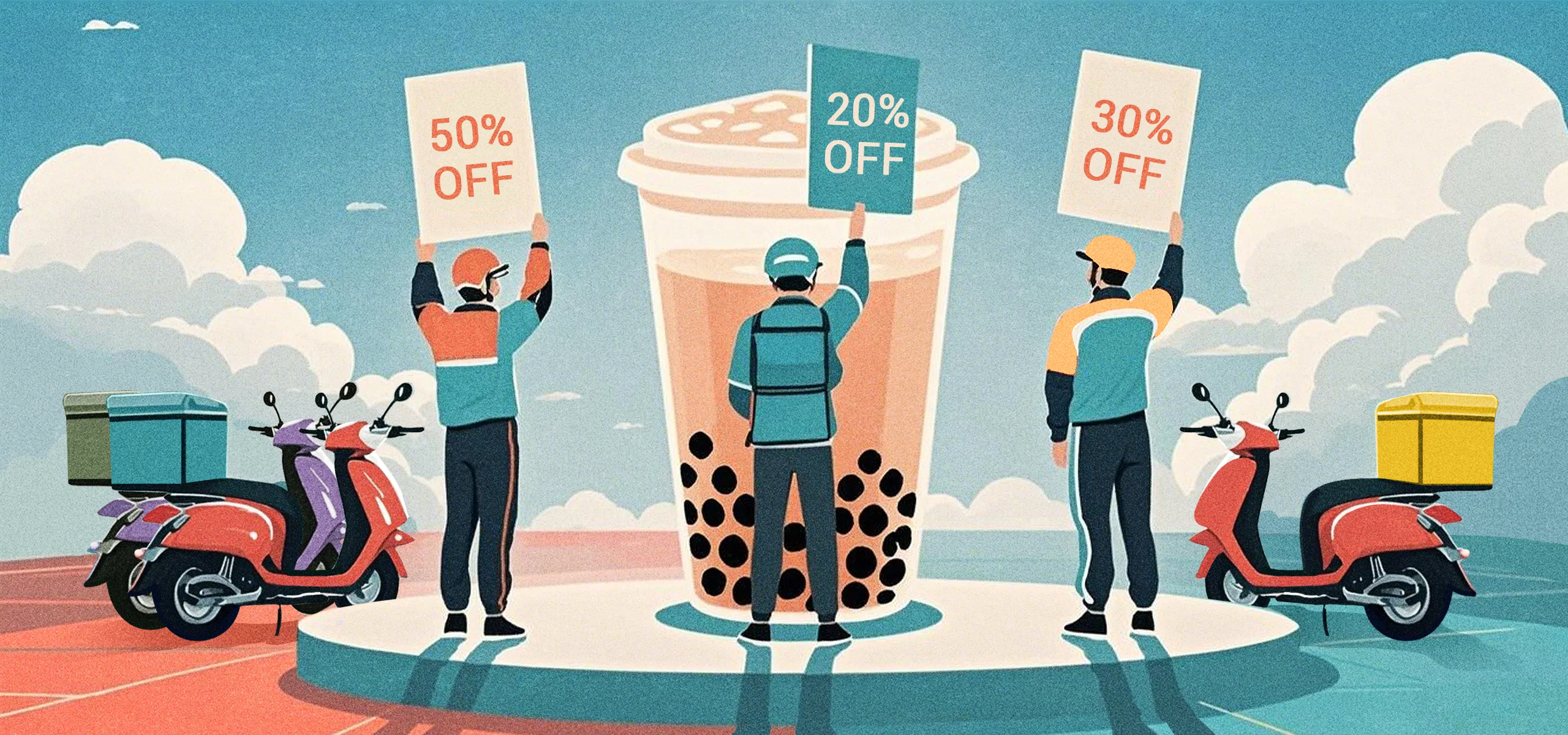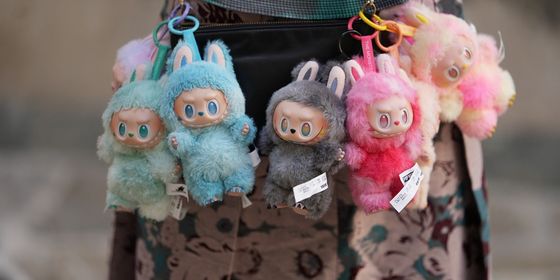In a scramble to capture and retain both customers and delivery riders, the country’s three biggest delivery platforms have gone into “war mode”
Bleary-eyed and already thinking of breakfast, netizens recently exclaimed that they had “Woken up to a battlefield (一觉醒来变天了 yí jiào xǐnglái biàntiān le).” After a long era of peace, smoke now rose across the country, and a “war” mostly affecting the cities had broken out.
Involving three powerful players, the conflict was soon likened to a modern-day “Three Kingdoms Rivalry (三国鼎立 sānguó dǐnglì),” drawing comparisons to the power struggle that once embroiled this land in the 3rd century.
But rather than armies, it was food delivery platforms that waged this battle: its soldiers the country’s millions of delivery drivers, and its potential spoils the mouths of the people.
The trouble began on February 11, when Chinese e-commerce giant JD.com officially launched a campaign to recruit high-quality restaurants for its new food delivery service. Merchants who joined the platform before May 1 would be exempt from platform service fees for a full year. The move would signal the beginning of a full-scale “delivery war (外卖大战 wàimài dàzhàn)” between JD.com and its entrenched competitors, Meituan and Ele.me.
In this low-margin sector, scale is key, and Meituan currently lays claim to nearly 70 percent of the market, with the Alibaba-owned Ele.me the second-largest player.
Stay updated on the latest Chinese memes and internet slang:
- China’s Jolly Snow King Protects His Throne
- Mastering the Art of Livestreaming Sales
- Behold the New Emperors of the Internet
To boost its competitiveness and hit the ground running, JD.com had its crosshairs on turning the industry’s delivery couriers, who often work under intense pressure and rigid time limits enforced by faceless algorithm-driven systems. Compounding these pressures are the frequent risk of traffic accidents, insufficient labor protections, and a lack of stable social benefits due to their gig- or contract-based status.
As such, JD.com announced that it would provide its full-time couriers with comprehensive social insurance and housing fund contributions—commonly known as the 五险一金 (wǔ xiǎn yì jīn), or “five insurances and one housing fund”—welcoming more delivery riders with regular employment status, or “正规编制 (zhèngguī biānzhì),” into the game.
As a publicity stunt, even JD.com’s founder and chairman, Richard Liu Qiangdong, spent an afternoon delivering food as a courier. Footage of him in a modest delivery uniform—waiting for orders and riding a scooter through the streets—flooded the internet, with some netizens clearly taken in by the performance. One online comment read:
If even the boss is out there delivering food himself, how bad can the platform really be?
老板都亲自送外卖,平台能差到哪里去?
Gimmick aside, JD’s promise of better welfare for delivery workers appears to be paying off—more couriers are switching sides and moving to its platform. Some have even gone viral on Douyin with “outfit transformation videos (换装视频 huànzhuāng shìpín),” proudly showcasing their switch to JD uniforms. Others, however, remain undecided. As one netizen joked:
I ordered from JD Delivery yesterday, but the rider showed up in a blue uniform (the signature color of Ele.me) and a yellow helmet (Meituan’s color).
昨天点了个京东外卖,来的骑手穿饿了么的蓝制服,戴美团的黄帽子。
But the delivery veterans aren’t going down without a fight. Meituan, for one, announced that it would also start offering social insurance to both full-time and stable part-time riders, a glimmer of progress emerging from the heat of competition.
Despite these small concessions to their frontline staff, what the platforms ultimately aim to seize is the vast number of users behind the orders, and the boundless business opportunities their personal information and digital traces present beyond food delivery.
On the inverse, what consumers mostly care about are the benefits to themselves, and benefits they did receive.
Speed-focused services like 超时免单 (chāoshí miǎndān) or “free if late,” 闪购 (shǎngòu, flash sales), and 小时达 (xiǎoshí dá, one-hour delivery) were launched in a race to outpace the competition.
With heavily advertised 超百亿补贴 (chāo bǎiyì bǔtiē) or “over 10 billion yuan in subsidies,” 优惠券 (yōuhuìquàn, coupons), and 专属红包 (zhuānshǔ hóngbāo, exclusive red envelopes), deep discounts flooded all three platforms—as if they were burning cash faster than they could deliver meals.
Caught in this storm of generosity, users happily embraced the golden era of “3 yuan for two cups of milk tea (三块钱两杯奶茶 sān kuài qián liǎng bēi nǎichá).”
Facing what some dubbed “the sweetest war in business history (商业史上最‘甜’的战争 shāngyèshǐ shang zuì ‘tián’ de zhànzhēng),” many couldn’t resist diving in for a good deal, cheering from the sidelines:
I just love an old-school business brawl. Go on, fight it out—let the storm rage even harder!
我就喜欢朴实无华的商战。打吧,打吧,暴风雨来得更猛烈些吧!
In some rare cases, by stacking coupons, people could even score a free order—what’s known as 零元购 (líng yuán gòu, or “zero-yuan purchases”). Other savvy consumers, worried that the coupons might soon expire, even came up with “milk tea stockpiling and freezing tips (囤奶茶冻奶茶攻略 tún nǎichá dòng nǎichá gōnglüè).”
For toppings, stick with coconut jelly—its texture stays the same after freezing and thawing.
小料建议只加椰果,冷冻后解冻口感没区别。
Avoid sago and tapioca pearls—they’ll turn hard once thawed!
西米、珍珠和波霸解冻后会变硬!
But some people can no longer bear the sweet burden (甜蜜的负担 tiánmì de fùdān):
I really can’t drink anymore. If this price war keeps going, they’ll be unscathed, while we end up with diabetes.
真喝不动了,再打下去,他们将毫发无伤,我们喝成糖尿病。
And sure enough, regardless of whether people had had their fill or not, the war couldn’t last forever. The ceasefire came on May 13, when five government agencies—led by the State Administration for Market Regulation—entered the fray, demanding that the commerce giants play fair and adhere to competition regulations.
Now, as milk tea prices return to normal, the time has come for those who once declared, “Drink up now, diet later (喝过商战再减肥 hēguò shāngzhàn zài jiǎnféi),” to put down their phones and crack open the freezer.












